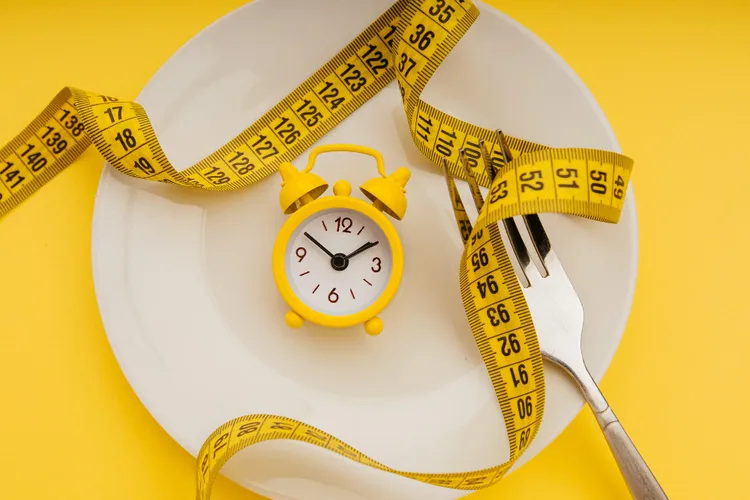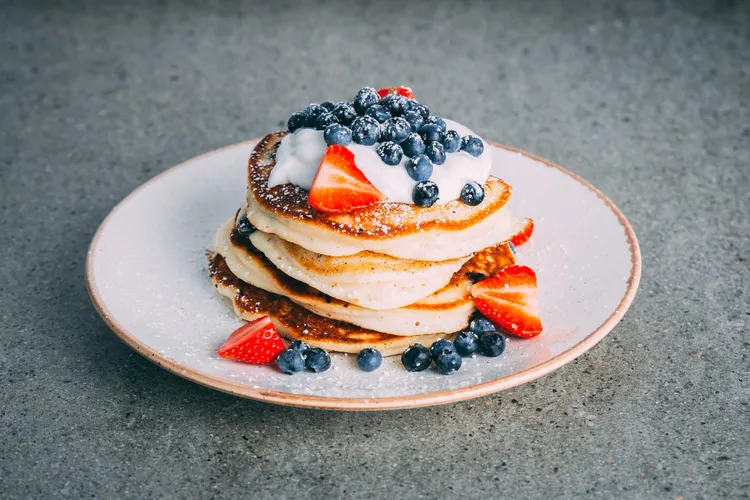Fasting: Fueling Your Body Right - A Holistic Guide to Nourishing from Within
Fasting has become one of the most powerful tools for natural healing, weight balance, and mental clarity - but it’s also one of the most misunderstood. Let’s understand how to fast for health and balance, nourish wisely, and thrive with intention.

True holistic fasting isn’t about restriction; it’s about restoration. It’s a mindful practice that gives your body a chance to reset, heal, and realign with its natural rhythm. Whether you’re exploring intermittent fasting, a 24-hour fast, or simply aiming to give your digestive system rest, fueling your body right makes all the difference.
What Happens When You Fast: The Science Behind the Serenity
When you enter a fast, your body begins a powerful transformation. Glucose levels drop, and your system shifts into fat-burning mode - using stored fat as energy. This process, known as ketosis, activates autophagy, your body’s natural “cleanup” mechanism.
Key Benefits of Fasting:
Cellular repair: Your body clears damaged cells and toxins.
Hormone balance: Insulin levels drop, improving metabolic health.
Mental clarity: Stable blood sugar enhances focus and calm.
Longevity: Studies link fasting to better cardiovascular and cellular health.
Fasting is essentially your body’s built-in reset button - when done mindfully.
Fasting the Holistic Way: Intention Over Restriction
Before diving into any fasting plan, set an intention. Are you fasting to detox, find clarity, balance hormones, or deepen spiritual awareness?
A holistic fasting approach honors your body’s signals - not just the clock.
Holistic Fasting Tips:
Start slow: Begin with a 12-hour overnight fast before advancing to 14–16 hours.
Hydrate deeply: Drink herbal teas, filtered water, or lemon-infused water.
Rest when needed: Sleep and gentle movement amplify fasting benefits.
Listen inward: If you feel dizzy or overly fatigued, adjust your approach.
Mindful fasting means fasting with kindness - not with force.
What to Eat Before and After Fasting (Fasting Meal Plan Guide)
Your pre- and post-fast meals determine how well your body adapts. Think nourish, not punish.
Before You Fast - “The Preparation Phase”
Fuel up with foods that provide stable energy and hydration:
Healthy fats: Avocado, coconut oil, olives
Complex carbs: Sweet potatoes, quinoa, brown rice
Fiber-rich greens: Spinach, kale, cucumber
Lean protein: Salmon, eggs, lentils
Avoid: Processed foods, refined sugar, alcohol, and dairy-heavy meals - they can trigger blood sugar spikes that make fasting harder.
Breaking Your Fast - “The Refeed Phase”
How you break your fast is as vital as the fast itself. Start gently.
Begin with warm water and lemon to wake digestion.
Then enjoy a light meal:
Bone broth or vegetable soup
Smoothie with greens, berries, and chia seeds
Steamed veggies with olive oil and sea salt
Later, include protein and fiber to maintain steady energy.
Breaking a fast with sugar or fried food can shock your system. Choose light, whole foods to reintroduce nourishment mindfully.
The Power of Hydration During Fasting
Hydration is the secret hero of a successful fast.
When you fast, your body releases electrolytes and fluids - so replenishing them is essential.
Best Drinks During Fasting:
Filtered water (2.5-3 liters per day)
Herbal teas: Peppermint, chamomile, or green tea
Coconut water: A natural electrolyte source
Mineral-rich water: Add a pinch of Himalayan salt for balance
Hydration curbs cravings, supports detox, and enhances mental clarity during fasting.
Lifestyle Practices That Amplify Fasting Benefits
Fasting is most effective when paired with mindful living. Try integrating these holistic habits into your routine:
Meditation or breathwork: Reduces cortisol and emotional hunger.
Gentle exercise: Yoga or nature walks stimulate circulation without stress.
Deep sleep: Cellular regeneration happens during rest.
Journaling: Track energy, emotions, and triggers - fasting is also an emotional cleanse.
Holistic fasting works best when you support body, mind, and spirit in unison.
Common Fasting Mistakes to Avoid
Even seasoned fasters can trip up. Avoid these common pitfalls:
Dehydration - skipping water reduces energy and focus.
Overeating post-fast - negates metabolic benefits.
Ignoring nutrients - long-term fasting without minerals leads to fatigue.
Comparing fasting results - your journey is uniquely yours.
Fasting success comes from listening inward, not measuring outward.
Gentle Reminder: Fasting Is About Nourishment, Not Neglect
Your body is wise - fasting simply gives it space to speak.
Approach fasting with compassion, not perfection. Whether it’s a daily intermittent fast or a seasonal detox, focus on nourishment, hydration, and mindfulness.
When you fuel your body right, fasting becomes an act of self-love, not self-denial.
The Balanced Art of Fasting for Health
Fasting, when practiced with awareness, connects you deeply to your body’s rhythm. It’s one of nature’s simplest yet most profound healing practices.
Let your fast be guided by intuition, fueled by real food, and supported by rest and gratitude.
Fuel your body right - and let fasting become a gateway to clarity, vitality, and peace.
Frequently Asked Questions
1. What is the healthiest way to start fasting?
The healthiest way to start fasting is gradually. Begin with a 12-hour overnight fast (for example, from 7 PM to 7 AM), then slowly increase to 14-16 hours as your body adjusts.
Start by skipping late-night snacks, drinking plenty of water, and choosing balanced meals rich in healthy fats, protein, and fiber.
Tip: Listen to your body. If you feel dizzy, tired, or irritable, shorten your fasting window until you adapt.
2. What should I eat before fasting to stay energized?
Before fasting, fuel up with slow-digesting, nutrient-dense foods. Combine complex carbs (sweet potatoes, quinoa), healthy fats (avocado, nuts, olive oil), and protein (eggs, lentils, or fish).
Avoid processed sugar or refined carbs - they spike your blood sugar and cause crashes during your fast.
Pre-Fast Meal Idea: Baked salmon with roasted vegetables and a drizzle of olive oil.
3. What are the best foods to break a fast?
Always break your fast gently with easy-to-digest, nourishing foods.
Start with warm water + lemon or bone broth, then move to a light meal like:
A green smoothie with spinach, berries, and chia seeds
Steamed veggies with olive oil
Scrambled eggs with avocado
Avoid fried, heavy, or sugary meals — they can shock your system and cause fatigue or bloating.
4. Can I drink coffee or tea during fasting?
Yes! Black coffee, herbal tea, or green tea are fasting-friendly.
They contain minimal calories and may even enhance fat metabolism. Avoid adding sugar, milk, or cream - these break your fast.
Tip: Herbal teas like chamomile or peppermint also help reduce hunger and calm digestion.
5. Is fasting safe for everyone?
Fasting is not ideal for everyone. People who are pregnant, breastfeeding, underweight, diabetic, or have a history of eating disorders should consult a healthcare provider before fasting.
For most healthy adults, intermittent fasting is safe when done mindfully and paired with proper hydration and nutrition.
6. How does fasting help with weight loss and metabolism?
Fasting helps your body burn stored fat for fuel by lowering insulin levels and increasing metabolic flexibility.
It also helps regulate ghrelin and leptin, the hormones responsible for hunger and satiety.
However, fasting isn’t just about eating less - it’s about eating smart and giving your body time to heal and reset.
7. How much water should I drink while fasting?
Hydration is key! Aim for 2.5-3 liters of water daily during fasting.
You can also include herbal teas, coconut water, or mineral water for electrolytes.
Adding a pinch of Himalayan salt to your water helps maintain electrolyte balance - especially during longer fasts.
8. Can I exercise while fasting?
Yes - but keep it gentle and intuitive.
Light movement like yoga, stretching, walking, or low-intensity workouts can enhance fat burning and boost circulation.
Avoid high-intensity training on an empty stomach, especially if you’re new to fasting.
Tip: Schedule your workouts near your eating window for best performance and recovery.
9. What are the signs that fasting isn’t working for me?
If you experience persistent fatigue, brain fog, mood swings, or dizziness, your fasting schedule may be too intense or unbalanced.
Fasting should energize you, not deplete you.
Listen to your body - adjust your fasting window, increase hydration, or consult a nutrition professional for guidance.
10. How can I make fasting a long-term lifestyle?
To make fasting sustainable:
Practice mindful eating - focus on quality, not restriction.
Stay consistent with your eating windows but allow flexibility for life events.
Support your fast with hydration, rest, and whole foods.
Treat fasting as self-care, not a diet trend.
When you fast with compassion and intuition, it becomes a balanced lifestyle, not a temporary fix.









